
The 26th United States Congress was a meeting of the legislative branch of the United States federal government, consisting of the United States Senate and the United States House of Representatives. It met in Washington, D.C. from March 4, 1839, to March 4, 1841, during the third and fourth years of Martin Van Buren's presidency. The apportionment of seats in the House of Representatives was based on the 1830 United States census. Both chambers had a Democratic majority.

The 27th United States Congress was a meeting of the legislative branch of the United States federal government, consisting of the United States Senate and the United States House of Representatives. It met in Washington, D.C., between March 4, 1841, and March 4, 1843, during the one-month presidency of William Henry Harrison and the first two years of the presidency of his successor, John Tyler. The apportionment of seats in the House of Representatives was based on the 1830 United States census. Both chambers had a Whig majority.

Robert Charles Winthrop was an American lawyer, philanthropist, and Whig Party politician who represented Massachusetts in the United States House and Senate from 1840 to 1851. He served as the 18th Speaker of the United States House of Representatives and was a political ally and colleague of Daniel Webster. After a rapid rise in Massachusetts and national politics and one term as speaker, Winthrop succeeded Webster in the Senate. His re-election campaign resulted in a long, sharply contested defeat by Charles Sumner. He ran for Governor of Massachusetts in 1851 but lost due to the state's majority requirement, marking the end of his political career and signaling the decline of the Massachusetts Whig Party.
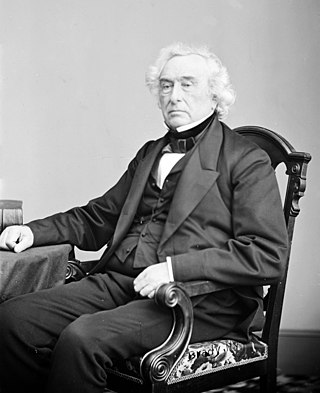
Francis Granger was an American politician who represented Ontario County, New York, in the United States House of Representatives for three non-consecutive terms. He was a leading figure in the state and national Whig Party, particularly in its moderate-conservative faction. He served as a Whig vice presidential nominee on the party's multi-candidate 1836 ticket and, in that role, became the only person to ever lose a contingent election for the vice presidency in the U.S. Senate. He also served briefly in 1841 as United States Postmaster General in the cabinet of William Henry Harrison. In 1856, he became the final Whig Party chairman before the party's collapse, after which he joined the Constitutional Union Party.

Jesse David Bright was the ninth Lieutenant Governor of Indiana and U.S. Senator from Indiana who served as President pro tempore of the Senate on three occasions. He was the only senator from a Northern state to be expelled for being a Confederate sympathizer. As a leading Copperhead he opposed the Civil War. He was frequently in competition with Governor Joseph A. Wright, the leader of the state's Republican Party.
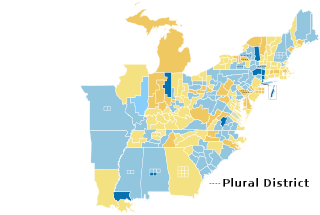
The 1840–41 United States House of Representatives elections were held on various dates in various states between July 6, 1840 and November 2, 1841. Each state set its own date for its elections to the House of Representatives, before or after the first session of the 27th United States Congress convened on May 31, 1841. Elections were held for all 242 seats, representing 26 states.

Nathaniel Pitcher Tallmadge was an American lawyer and politician. He served two terms as United States Senator from New York (1833–1844) and was the 3rd Governor of the Wisconsin Territory (1844–1845).

The 1839—1840 United States Senate election in New York was held on February 5, 1839 and January 14, 1840. Incumbent Senator Nathaniel P. Tallmadge was re-elected to a second term in office over scattered opposition.

The 1845 United States Senate special election in New York was held on January 18, 1845 by the New York State Legislature to elect two U.S. Senators to represent the State of New York in the United States Senate. The regular 1845 United States Senate election in New York was held on February 4, 1845, to elect a U.S. Senator to represent the State of New York in the United States Senate.
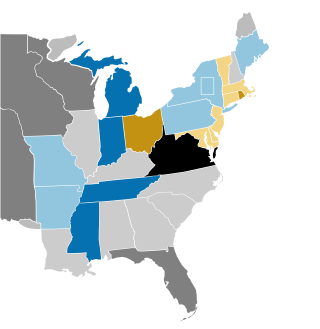
The 1844–45 United States Senate elections were held on various dates in various states, coinciding with James K. Polk's election. As these U.S. Senate elections were prior to the ratification of the Seventeenth Amendment in 1913, senators were chosen by state legislatures. Senators were elected over a wide range of time throughout 1844 and 1845, and a seat may have been filled months late or remained vacant due to legislative deadlock. In these elections, terms were up for the senators in Class 1.
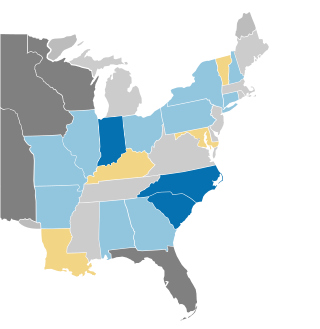
The 1842–43 United States Senate elections were held on various dates in various states. As these U.S. Senate elections were prior to the ratification of the Seventeenth Amendment in 1913, senators were chosen by state legislatures. Senators were elected over a wide range of time throughout 1842 and 1843, and a seat may have been filled months late or remained vacant due to legislative deadlock. In these elections, terms were up for the senators in Class 3.

The 1840–41 United States Senate elections were held on various dates in various states. As these U.S. Senate elections were prior to the ratification of the Seventeenth Amendment in 1913, senators were chosen by state legislatures. Senators were elected over a wide range of time throughout 1840 and 1841, and a seat may have been filled months late or remained vacant due to legislative deadlock. In these elections, terms were up for the senators in Class 2.

The 1838–39 United States Senate elections were held on various dates in various states. As these U.S. Senate elections were prior to the ratification of the Seventeenth Amendment in 1913, senators were chosen by state legislatures. Senators were elected over a wide range of time throughout 1838 and 1839, and a seat may have been filled months late or remained vacant due to legislative deadlock. In these elections, terms were up for the senators in Class 1.

The 1840 United States Senate election in Pennsylvania was held on January 14, 1840, after the regularly scheduled election in December 1838 was postponed due to the Buckshot War. Daniel Sturgeon was elected by the Pennsylvania General Assembly to the United States Senate.

The 1844 United States elections elected the members of the 29th United States Congress, and took place during the Second Party System in the midst of the debate over whether to annex Texas. Texas and Iowa joined the union during the 29th Congress. Democrats retained control of the House and took back control of the Presidency and the Senate, re-establishing the dominant position the party had lost in the 1840 election.
The 1842 United States elections occurred in the middle of President John Tyler's term, during the Second Party System. Tyler had become president on April 4, 1841, upon the death of his predecessor, William Henry Harrison. Elected as vice president on the Whig ticket with Harrison in 1840, Tyler was expelled from the party in September 1841. Members of the 28th United States Congress were chosen in this election. Florida joined the union during the 28th Congress. Whigs kept control of the Senate, but lost control of the House.
In 1841, Spencer Jarnagin was nominated for U.S. Senator by the Whig caucus in the Tennessee General Assembly. However, some of the Democrats in the legislature decided that no senator would be preferable to a Whig. Known as the "Immortal Thirteen" by Tennessee Democrats, they refused to allow a quorum on the issue.
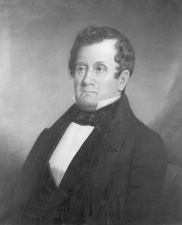
The 1841 New Hampshire gubernatorial election was held on March 9, 1841.

The 1842 New Hampshire gubernatorial election was held on March 8, 1842.